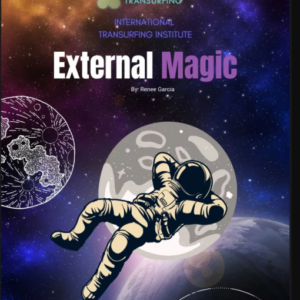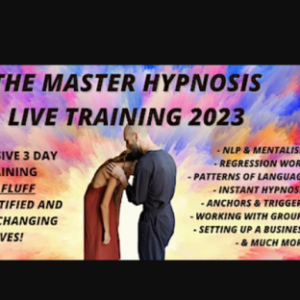Stefan Molyneux – How to Prevent Violent Criminal Behavior in the Next Generation
STEFAN MOLYNEUX – HOW TO PREVENT VIOLENT CRIMINAL BEHAVIOR IN THE NEXT GENERATION
“The child’s inclination to cooperation is challenged from the very first day. The immense importance of the mother in this respect can be clearly recognized. She stands on the threshold of the development of social feeling. The biological heritage of social feeling is entrusted to her charge. She can strengthen or hinder contact by the help she gives the child in little things, in bathing him, in providing all that a helpless infant is in need of. Her relations with the child, her knowledge, and her aptitude are decisive factors…. It may readily be accepted that contact with the mother is of the highest importance for the development of human social feeling…. We probably owe to the maternal sense of contact the largest part of human social feeling, and along with it the essential continuance of human civilization.” — Alfred Adler 1
“Becoming a biological parent, parentage, is a matter of a few minutes; becoming a responsible parent, parenthood, is something else again, a matter of adequate preparation…. Every birth should be regarded as a contribution to society as well as to the family and to the child that has been born. A gift to be treated with gratitude and reverence, so that every child may be from birth assured of the optimum conditions for development and fulfillment. Anything short of this is to disinherit the newborn of his birthright and to deprive his society of a cooperating and contributing member.” — Ashley Montagu 2
One of the worst diseases that ever ravaged humanity was smallpox. There was a time when about one in five who became infected died and almost everyone became infected. Survivors were left scarred and sometimes blind. In those days, no one could have foreseen that a simple procedure, vaccination, would eventually provide protection to everyone and cause the eradication of smallpox from the earth.
The smallpox virus and criminal behavior have several features in common. Both affect only the human species. Both are spread infectiously from one person to the next. Both are preventable by making the potential host immune. Once eliminated, neither spontaneously regenerates.
Today it is equally possible to immunize a child against criminality as against smallpox.
How can it be done?
We can answer this question by examining our prison population and determining who’s not present. We must ask, is there a common ingredient in the lives of those who don’t become criminals, and is also consistently absent from the lives of those who do become criminals?
The answer is yes, there is. This key ingredient, this precious stuff that seems to be associated exclusively with people who never become candidates for the penitentiary, has been identified. And there is no reason that it cannot be introduced universally. When that is done, crime and violence will go the way of smallpox.
Who’s not in prison?
The person whose closest caretakers used methods of infant care and child rearing that were gentle, patient and loving is not in prison. The person who sensed from earliest infancy that adults are the source of safety, security and comfort is not in prison. The person who always felt wanted is not in prison. The person who was respected, encouraged to explore and inquire is not in prison. The person who grew up seeing family members and others treat each other with respect and honor each other’s privacy and dignity is not in prison. The person who had ample exposure in childhood to people who used reasoning, not violence, to solve problems is not in prison. The person whose physical and emotional needs during infancy and childhood were met is not in prison. To summarize: The child who is reared in an attentive, supportive, nonviolent family will never spend time behind bars.
To the skeptical reader, I offer the following challenge. Visit any prison and try to identify just one incarcerated felon who was brought up in a household where harmonious interaction was the norm. You will not succeed.
Who is in prison?
You will find people who were born into households where every other adult family member, including older siblings, had the right to inflict whippings at whim, and often did. You will find people who in childhood were never cuddled, hugged, played with, protected, guided, comforted, soothed, read to, listened to or tucked in, but mainly growled at, barked at, insulted, smacked and ignored. You will find people who never had a single possession that was not subject to being wrenched away by somebody stronger. You will find people who grew up in families where the late-night sound of someone whipping a colicky infant with a wire coat hanger was nothing out of the ordinary. You will find people who in childhood, even in infancy, were targets for adults’ sexual appetites. You will find people who, throughout their developmental years, were rarely or never touched by any hand except in ways that frighten, hurt and leave bruises.
Dr. Morris Wessel puts it this way: “Beaten and battered children are more likely to become adults who have inadequate control of their aggressive feelings, who therefore strike out mercilessly against children, spouses, friends and at times even other members of society. The violence inflicted on children by their closest relatives and caretakers has a long-lasting and horrifying effect. These children grow up with the idea that, when another person’s behavior is displeasing to them, violent acts against that person are appropriate ways to deal with feelings of displeasure. In short, members of each adult generation tend to reproduce in their interpersonal relationships the violence which they experienced in their childhood.”3
In the same vein, Dr. Philip Greven writes: “The most visible public outcome of early violence and coercion in the name of discipline is the active aggression that begins to shape the character and behavior in childhood and continues, in far too many instances, throughout the lives of those who suffered most in their earliest years. Aggressive children often become aggressive adults who often produce more aggressive children, in a cycle that endures generation after generation. Corporal punishments always figure prominently in the roots of adolescent and adult aggressiveness, especially in those manifestations that take antisocial form, such as delinquency and criminality.”4
Blaming poverty
Many experts blame violence and criminality on poverty. This is the standard view among advocates for the disadvantaged. But the theory falls apart the moment we attempt to apply it to violence and criminality among the affluent. Consider the Mafia. The source of their bad behavior has nothing to do with the state of their finances, but everything to do with how they were treated as children.
“…And later, when I got to meet their kids, I was amazed at how much trouble the kids gave them. The kids were always in trouble. They were always in fights. They wouldn’t go to school. They’d disappear from home. The women would beat their kids blue with broom handles and leather belts, but the kids wouldn’t pay any attention…” Nicholas Pileggi, Wiseguy: Life in a Mafia Family, p. 73.
The real culprit
Mistreatment of children beginning at infancy, perpetrated by parents and other primary caretakers, is what infects children with the virus of violence. In much the same way that it interferes with the bonding process between child and parent, it stunts the child’s ability to become socially integrated with the larger law-abiding community. It handicaps the child with a lifetime supply of anger. It makes every future irritation seem a mortal attack; every delay of gratification, a personal insult. It models for the child no essential problem-solving skills, but instead: selfishness, aggression, rage, tyranny. It makes escape by means of drugs and alcohol appealing options, irresistible to many. The worse and the earlier the mistreatment, the more severe the outcome.
Researchers Sheldon and Eleanor Glueck have found that the first indicators of delinquency are usually recognizable in children between the ages of 3 and 6, and almost always before 11.5 Yet programs and services that purport to address the delinquency problem almost invariably are aimed at adolescents and young adults. Obviously such programs are of no value to the babies still at home, being abused and neglected, for whom intervention now would make all the difference later. As for parents whose children have been removed by the courts for their safety, and who are required to take parenting classes as a condition for being reunited with their children, such intervention comes only after the damage has been done. In many cases, that’s too late to significantly benefit either child or parent.
Precisely because their most urgent needs are not met, abused infants grow into adults who remain fixated on their own feelings of frustration. Such people have difficulty recognizing anyone’s needs other than their own. When they become parents, they are unable to cope with the demands placed on them by an infant. They remain at a stage of arrested development, all the while searching for relief from the chronic anger that derives from events impossible for them to remember — anger that smolders beneath the surface and erupts all too easily when a defenseless target comes within arm’s reach.
Being deprived babies themselves, and feeling rudely displaced by their own offspring, they are spontaneously hostile to them. They spank as naturally as they were spanked. They bully their growing children as they were bullied. They produce damaged children who in turn become inept parents who produce more damaged children.
When such a pattern is the norm in society, the courts stay busy and the prisons stay filled.
Condoning violence against children
Our laws and cultural values are unambiguous concerning adults who physically attack or threaten other adults. Such behavior is recognized as criminal and we hold the perpetrators accountable. Why then, when so much is at stake for society, do we accept the excuses of child batterers? Why do we become interested in the needs of children only after they have been terribly victimized, or have become delinquents victimizing others?
The answer is not complicated. Until we can honestly acknowledge the mistreatment we’ve experienced in our own childhood and examine the shortcomings of our own parents, we will be incapable of feeling sympathy for any child abused as we were. To the extent we feel compelled to defend our parents and guard their secrets, we will do the same for others. We will look the other way. By insisting that we “turned out OK” we are really trying to reassure ourselves and to divert our own attention from deeply unpleasant memories.
That’s why, when someone says, “spanking is abuse,” many of us react as though a door that has been locked since infancy is about to be flung open, a door that has prevented us from committing the most dangerous, most unpardonable act of disloyalty imaginable: disloyalty to the parent. We fear that by unlocking that door we might fall through into an abyss, abandoned, cut off from any possibility of reconciliation with the parents we love.
That fear is irrational. Dishonesty about what was done to our generation and what we are doing, and allowing to be done, to the next generation, is the real danger and the real sin.
Reconciliation and healing can only begin with an acknowledgment of the truth, for it is futile to hope that lies, evasions and excuses can somehow erase the memory and the pain of past injuries.
THREE STEPS TOWARD A SOLUTION
Repeal bad laws
We should rescind legislation regarding children’s status that is based on the mythical distinction between spanking and battery. Every state in the U.S. has such laws.
There can be no rational excuse for giving children less protection against battery than adults have. Because of such exclusions and the anti-child prejudices they reinforce, children in the United States today receive no better legal protection against cruel treatment than did slaves prior to emancipation. Now is the time to repeal the Jim Crow laws against children and extend to them the same constitutional guarantees that are taken for granted by every other class of citizen.
Educate for parenthood
The person who was raised by incompetents, never witnessed competent parenting and has been taught nothing about the needs and nurturing of infants is seriously educationally deprived. Such a person poses a far greater potential problem for society than the person who has not learned to read or calculate. Enlightened educators must finally assume the responsibility for preparing young people for their most important role in life: parenthood.
Counsel new parents
All new parents should receive sound advice about nurturing, nonviolent parenting.
Programs for counseling, monitoring and early intervention with high-risk parents, similar to the one now in place in Hawaii, should be implemented everywhere. Families deemed high-risk should be enrolled in programs of ongoing counseling and home monitoring. Where needed, skilled counselors should help convince mothers and fathers, grandparents and other caretakers that the traditional examples they have been shown and the advice they have been given about “disciplining” children are bad examples and bad advice.
In cases where babies need to be rescued, it should be done with a minimum of delay. Experience has taught us that when we fail to protect them early, we pay a hundredfold later.
Conclusion
We are confident that our society will find the moral courage to end its denial of this simple and terrible truth: Violent criminals are made. We ourselves create them at home.
Clearly, the solution does not lie in more prisons and swifter, harsher punishments nor in heroic efforts to rehabilitate profoundly damaged, dangerous adults. By now we should have had enough of these high-cost, low-yield, after-the-fact remedies. Honest answers lie in true understanding of the disease at its source, active prevention and compassionate early intervention.
Delivery Method
– After your purchase, you’ll see a View your orders link which goes to the Downloads page. Here, you can download all the files associated with your order.
– Downloads are available once your payment is confirmed, we’ll also send you a download notification email separate from any transaction notification emails you receive from coursesblock.com.
– Since it is a digital copy, our suggestion is to download and save it to your hard drive. In case the link is broken for any reason, please contact us and we will resend the new download link.
– If you cannot find the download link, please don’t worry about that. We will update and notify you as soon as possible at 8:00 AM – 8:00 PM (UTC 8).
Thank You For Shopping With Us!








